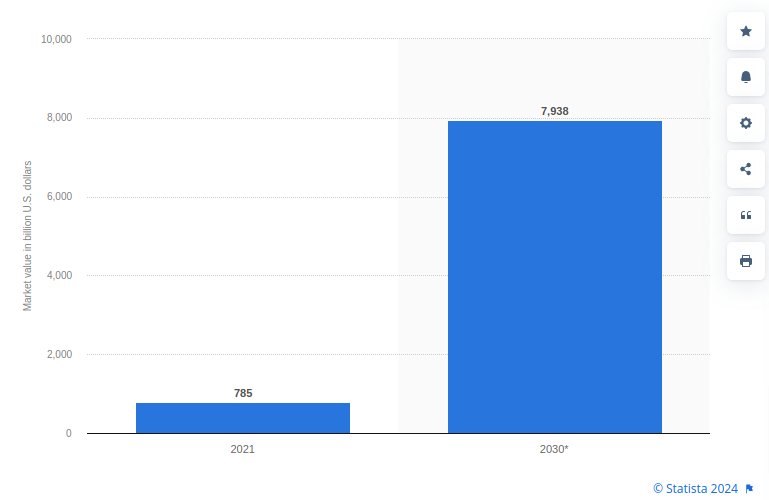At the click of a button, sellers can now open digital doors to customers around the globe. Cross-border ecommerce allows businesses to transcend borders to connect with new audiences and tap into the 90+% of the world’s consumers who live outside their home country. By 2030, the sector is projected to reach almost $8 tn, demonstrating the vast potential in selling to foreign markets.

When aspiring to access a world of new potential clients, companies must do their homework before opening up international sales. They must carefully analyze target markets, determine how to reach online and offline shoppers, identify key regional marketplaces, and properly localize the customer experience. They also need to navigate legal regulations, trademark issues, and challenges around shipping and payments in each new country. In a word, they need a plan.
This guide will help you craft a cross-border strategy, tackle obstacles head-on, and leverage tools to help you sell to customers worldwide.
What is cross border ecommerce?
This type of trading is far from new. Cross-border ecommerce is the buying and selling of goods and services across geographic boundaries. With the advent of platforms such as Amazon or eBay, digital sales residing abroad have expanded. They stopped being solely the purview of sizable multinational corporations and became available for any fledgling company utilizing Amazon, eBay, and the likes of them ( B2Brazil, Alibaba, TradeKey, and others) to build global digital demand for their offerings.
Another survey shows the majority of businesses are preparing to expand their sales reach beyond domestic markets within the next few years:
- 66% of companies currently not engaged in online international sales have plans to do so soon.
- 90% anticipate pursuing an international sales strategy within the next three years.
88% of online retail industry leaders expect that international business will be essential for their company to achieve its objectives in five years.

Why brands are going global
Global selling unlocks new opportunities to reach international customers in a scalable way. That said, сross-border ecommerce is a tipping point due to:
- Increase in customer pool. Selling in other countries expands your potential customer base. Even niche products can find larger audiences across borders.
- Boost in sales and profits. Cross-border ecommerce opens you up to billions of buyers – capturing even a tiny fraction of a foreign market can boost your revenues.
- Gaining competitive advantage. Being an early mover into new markets allows you to seize market share before competitors.
- Diversification of risks. Selling in multiple countries reduces dependency on any single market and provides more stability if one market experiences an economic downturn.
- Smoothing seasonal sales slumps. Different hemispheres have opposite seasons, so you can tap into demand year-round.
Define your game in cross border ecommerce
While international sales may seem complicated at first, their rewards are compelling. Sales, profits, and brand authority can all get a promotion from this game-changing opportunity. To succeed, defining a clear strategy is key.
Lay the groundwork
To craft your cross border ecommerce strategy, begin by analyzing your target markets.
Consider:
- GDP and population. Aim for countries with a high GDP and large population. Don’t forget emerging markets – often, they develop faster than the first-league ones.
- Online readiness. See which countries have an established online shopping culture to reach customers who are accustomed to buying on the internet.
Determine if you’ll sell online, traditionally, or both
If you sell high-touch goods or want to connect with customers face-to-face, you may consider exporting to physical retailers in your target countries. Local retailers can help navigate domestic business practices.
Take into account that:
- Selling through retailers may limit your flexibility in manoeuvering across the business landscape but also reduce risks.
- Retailers have established customer pools and can handle cross border ecommerce logistics like shipping and payments.
- They can also share insights into regional preferences to help you optimize your products.
The pathway you opt for depends on your business and risk tolerance. Many brands use a hybrid model, selling on local marketplaces and in physical stores. You may start with one channel, learn from your experience, and expand.
Explore regional marketplaces
Check major regional marketplaces to define the best fit for your products. Tmall Global and JD Worldwide in China, Souq in the Middle East, and MercadoLibre in Latin America are among the options.
Large marketplaces already have a built-in customer pool. They can handle payments, shipping, and regulations for you.
Speak your shoppers’ language
To connect with local customers, you must speak their language. Translating your site and marketing materials is necessary while preparing your venture for cross border ecommerce.
In addition to that, it’s crucial to:
- Display prices in local currencies
- Use location-specific product names and descriptions
- Tailor your messaging to cultural norms in each market
- Offer native language support and local payment methods
Clear the cross border ecommerce barriers
When selling across borders, you’ll encounter challenges. The rules vary widely, so scrutinize them to avoid penalties.
Brush up on:
Local regulations. Ensure you understand regulations around prohibited goods, safety standards, import/export tax, and more before shipping to a new market.
Shipping and payments. Implement an efficient order processing system to ensure quick handling and shipping of orders – automate as much of the process as possible using software. Provide customers with shipping speeds and price points like standard, express, etc. Work with forwarders who can find the most cost-effective ways of delivering goods internationally or consider establishing fulfillment centers in other countries to minimize transportation times and costs.
Scaling new heights with Shopify Plus
Shopify Plus helps merchants address the hurdles of cross-border ecommerce. With enterprise-grade characteristics and expandability, it offers a robust platform for international expansion.
It boasts:
- Security and compliance. You can rely on PCI-compliant payments, fraud analysis, and data security, essential for gaining customer trust across borders.
- Localized experiences. The platform can tailor storefronts to specific markets with translated content, location-based pricing, and regional payment instruments.
- Fulfillment and shipping. The platform integrates with major carriers to print shipping labels, calculate rates, and track global shipments. Shopify’s Fulfillment Network helps merchants scale internationally through distributed inventory and fast, affordable shipping.
As a business leader, you know that global opportunities abound in today’s interconnected world. However, expanding your ecommerce operations requires investments of time and resources. If you ask yourself how you can reach new audiences and grow while maintaining a cohesive brand experience, partnering with an experienced cross border ecommerce solution provider can be the answer.
Elogic has the decade-long expertise to guide you through the complex process of global outreach. From designing a tailored Shopify Plus store to re-platforming and providing ongoing consultation – you can depend on us to simplify global ecommerce.
We believe that your business was never meant to be confined within any boundaries. Let Elogic help you cross borders and achieve your full international potential.
Build your store on a flexible, enterprise-level ecommerce platform with a trusted Shopify Plus Partner.
Start nowFAQ
What services does Elogic offer for cross-border ecommerce?
Elogic provides tailored solutions for cross border ecommerce, including:
- Development of Shopify Plus stores optimized for global audiences and built to convert visitors into customers
- Migration to Shopify Plus with data transfer, design customization, development of new features, and re-platforming included
- Strategic advice on solutions and ongoing support after launching your new Shopify Plus store
How can I get started with cross-border ecommerce?
The primary step is to develop a strategy focused on the markets you want to enter. Then, build a robust ecommerce website tailored to each target market.
Critical are:
- Translating your site into the local language
- Accepting popular local payment methods
- Using location-specific product images and content
- Providing currency conversion
- Offering duty and tax calculations at checkout
- Ensuring compliance with regulations in each new market



